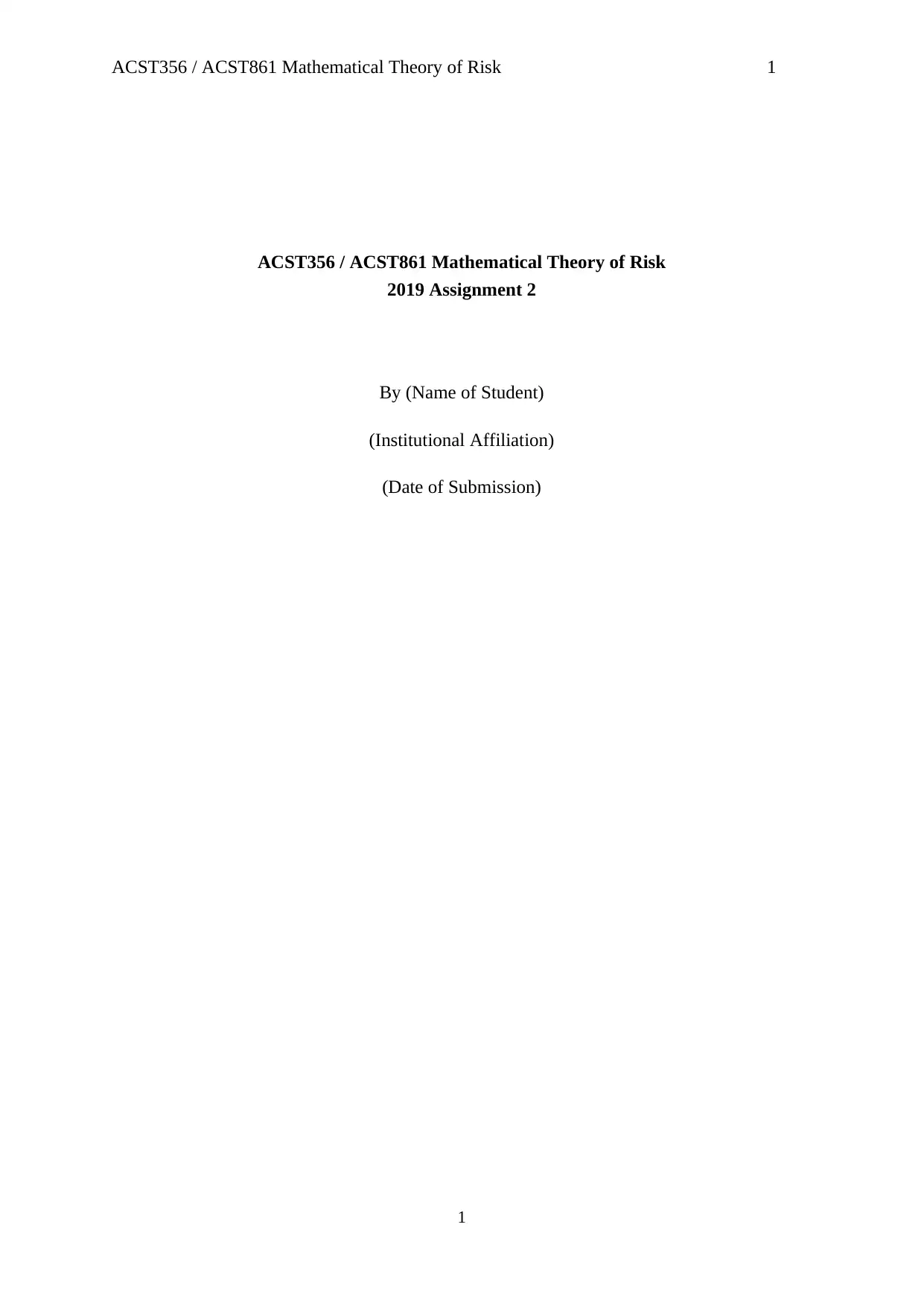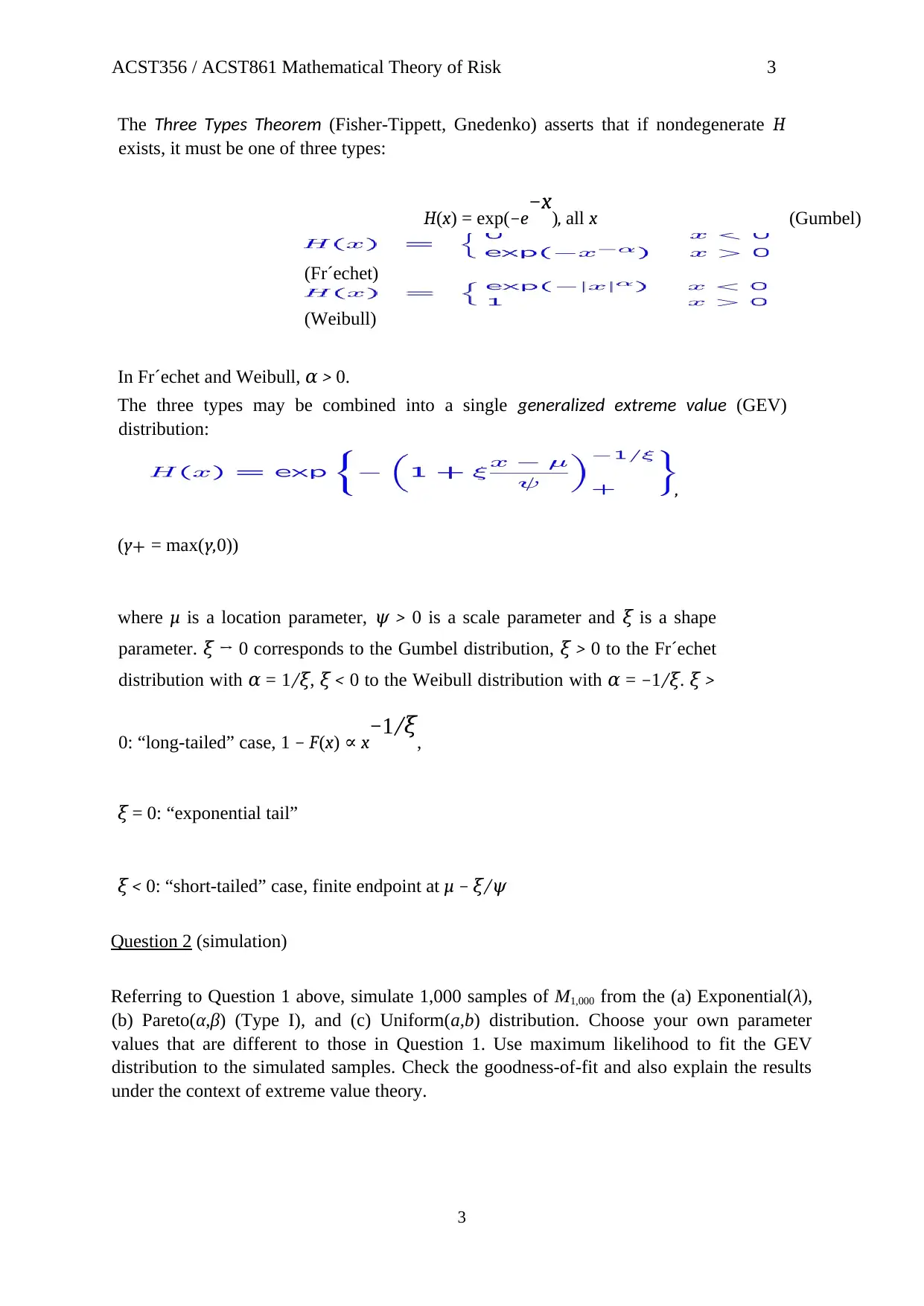Mathematical Theory of Risk Assignment 2: Extreme Value Analysis
VerifiedAdded on 2023/03/31
|4
|589
|469
Homework Assignment
AI Summary
This assignment solution addresses key concepts in the mathematical theory of risk, specifically focusing on extreme value theory and its applications. The assignment begins with an exploration of the Fisher-Tippett-Gnedenko Theorem, analyzing the convergence of maximum values from Exponential, Pareto (Type I), and Uniform distributions to the generalized extreme value (GEV) distribution. It requires identifying the GEV parameters (μ, σ, and ξ) for each underlying distribution. The second part involves simulating 1,000 samples from the same distributions with different parameter values, fitting the GEV distribution using maximum likelihood estimation, and assessing goodness-of-fit. The student is expected to interpret the results within the context of extreme value theory, demonstrating a strong understanding of the subject matter. References to relevant literature are also included.
1 out of 4






![[object Object]](/_next/static/media/star-bottom.7253800d.svg)